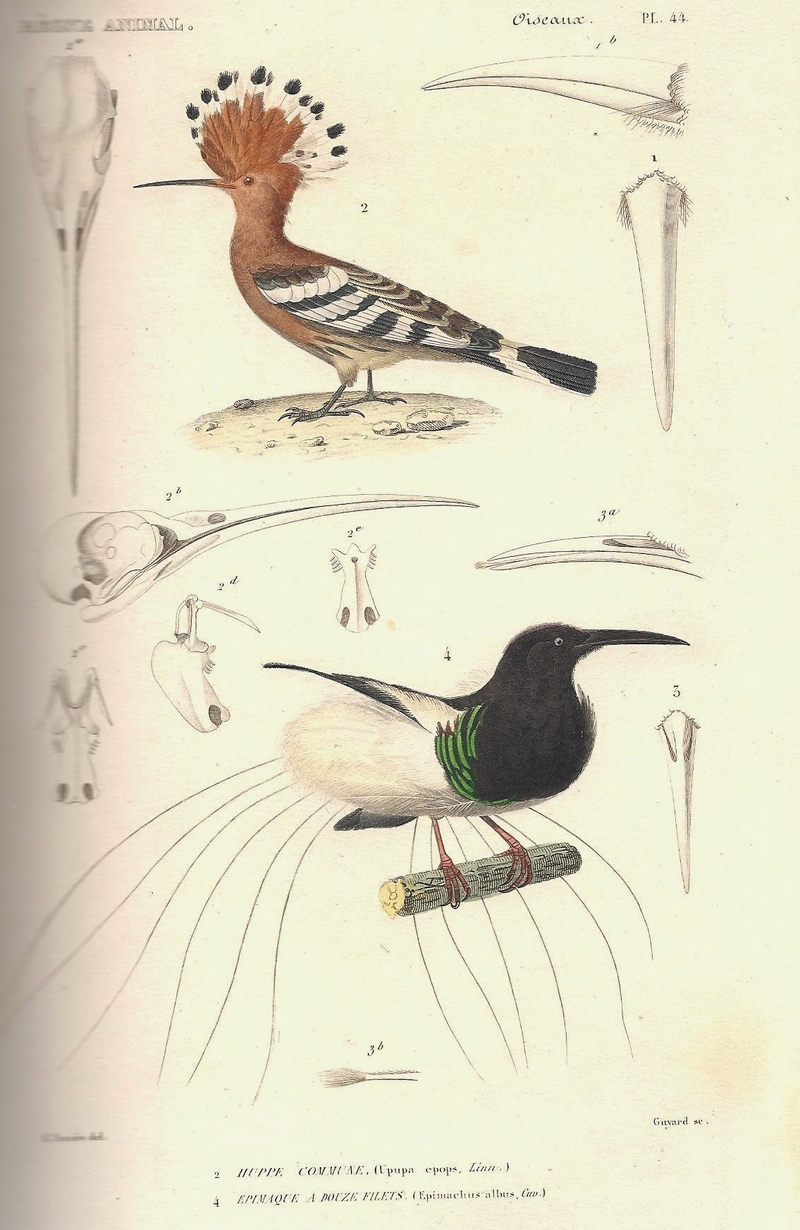|
| Query: Le règne animal | Result: 46th of 50 | |
common hoopoe (Upupa epops), twelve-wired bird-of-paradise (Seleucidis melanoleucus)
| Subject: | common hoopoe (Upupa epops), twelve-wired bird-of-paradise (Seleucidis melanoleucus)
| | Poster: | Wiki Photos (---@---.---)
| |

| Resolution: 1135x1745
File Size: 833152 Bytes
Date: 2013:04:26 09:07:12
Upload Date: 2017:03:04 02:38:14
|
2. Huppe Commune (Upupa epops, Linn.) = common hoopoe (Upupa epops)
4. Epimaque a Douze Filets (Epimachus albus, Cuv.) = twelve-wired bird-of-paradise (Seleucidis melanoleucus)
Description
Français : Planche N°44 dessinée par Edouard Traviés provenant du livre "Le règne animal distribué d'après son organisation" par Georges Cuvier (Tome 4), seconde édition de 1828, représentant :
-en haut : Huppe fasciée (Upupa epops)
-en bas : Epimaque à douze filets (Epimachus albus)
Date 26 April 2013, 09:07:12
Author Rvalette
Source: https://commons.wikimedia.org/wiki/File:Cuvier-44-Huppe_fasci%C3%A9e_et_epimaque_%C3%A0_douze_filets.jpg
The hoopoe or common hoopoe (Upupa epops) is a colourful bird found across Afro-Eurasia, notable for its distinctive "crown" of feathers. It is the only extant species in the family Upupidae. Upupa and epops are respectively the Latin and Ancient Greek names for the hoopoe; both, like the English name, are onomatopoeic forms which imitate the cry of the bird.
The twelve-wired bird-of-paradise (Seleucidis melanoleucus) is a medium-sized, approximately 33 cm long, velvet black and yellow bird-of-paradise. The male has a red iris, long black bill and rich yellow plumes along his flanks. From the rear of these plumes emerge twelve blackish, wire-like filaments, which bend back near their bases to sweep forward over the bird's hindquarters. The female is a brown bird with black-barred buffy underparts. Their feet are strong, large-clawed and pink in color. |
^o^
Animal Pictures Archive for smart phones
^o^
|
|

